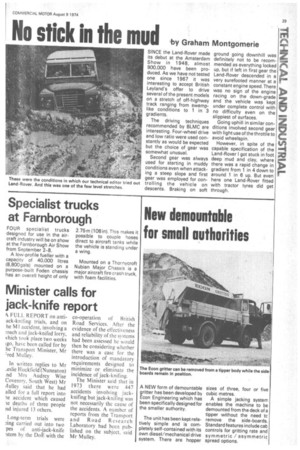No stick in the mud
Page 31

If you've noticed an error in this article please click here to report it so we can fix it.
by Graham Montgomerie
SINCE the Land-Rover made its debut at the Amsterdam Show in 1948, almost 900,000 have been produced. As we have not tested one since 1967 it was interesting to accept British Leyland's offer to drive several of the present models on a stretch of off-highway track ranging from swamplike conditions to 1 in 3 gradients.
The driving techniques recommended by BLMC are interesting. Four-wheel drive and low ratio were used constantly as would be expected but the choice of gear was somewhat unusual.
Second gear was always used for starting in muddy conditions even when attacking a steep slope and first gear was employed for controlling the vehicle on descents. Braking on soft ground going downhill was definitely not to be recommended as everything locked up, but if left in first gear the Land-Rover descended in a very surefooted manner at a constant engine speed. There was no sign of the engine racing on the down-grade and the vehicle was kept under complete control with no difficulty even on the slippiest of surfaces.
Going uphill in similar conditions involved second gear with light use of the throttle to avoid wheelspin.
However, in spite of the capable specification of the Land-Rover I got stuck in foot deep mud and clay, where there was a rapid change in gradient from 1 in 4 down to around 1 in 6 up. But even here one Land-Rover fitted with tractor tyres did get through.
































































































































